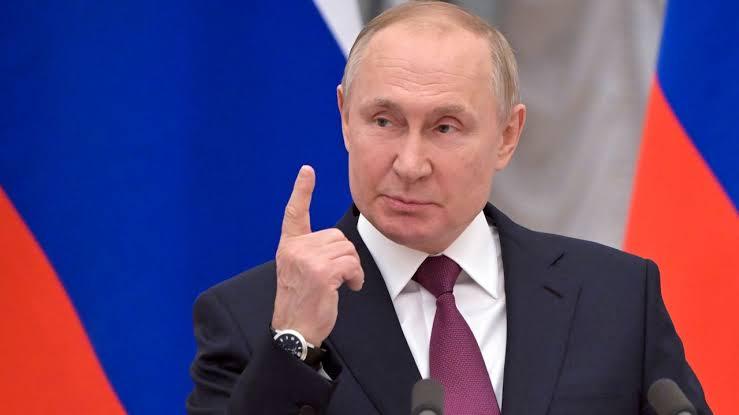
In a bold geopolitical maneuver, Russian President Vladimir Putin has issued a direct warning to the United States, defending India amid escalating tensions over oil trade and tariffs. The latest development transforms what began as a trade standoff between India and the U.S. into a broader clash between Washington and Moscow — with far-reaching implications for global energy markets.
The Trigger: Trump’s Tariff Threat on India
The chain of events was set in motion on July 31, when the Trump administration announced a 25% tariff on Indian goods if a bilateral trade deal failed to materialize. Alongside this, Washington warned of additional penalties if India continued to import discounted crude oil and defense equipment from Russia.
India, however, responded assertively. New Delhi made it clear that it would not bow to external pressure and reiterated its commitment to buying discounted crude oil from Russia, citing its economic and strategic interests.
India–Russia Oil Trade: A Critical Economic Link
India is currently one of Russia’s largest and most reliable crude oil buyers. The stakes are high on both sides:
If India halts purchases, it stands to lose an estimated $11 billion annually, as it benefits immensely from discounted Russian crude that supports its refining industry and stabilizes domestic fuel prices.
For Russia, losing the Indian market would mean a direct hit of $40–45 billion per year — nearly 20% of its total oil export revenue.
In short, India is a crucial market for Russia, and its continued participation ensures a stable outlet for Russian oil amid Western sanctions.
Putin’s Countermove: The CPC Pipeline Threat
Amid mounting U.S. pressure on India, Putin unveiled a powerful countermeasure: a threat to shut down the Caspian Pipeline Consortium (CPC) pipeline — one of the world’s most vital oil conduits.
What Is the CPC Pipeline?
Length: Not very long in distance, but enormous in volume.
Throughput: Around 1.3 million barrels per day.
Route: Starts at Kazakhstan’s Tengiz oil fields, passes through Russia, and ends at the Black Sea, allowing access to global markets.
Operators: Includes Western giants like ExxonMobil, Chevron, Shell, and BP — making it not just a regional asset but a linchpin in Western energy supplies.
Although the CPC pipeline primarily exports Kazakh oil, its route through Russian territory gives Moscow strategic leverage.
The Global Fallout of a CPC Shutdown
If Russia follows through on its threat to shut the CPC:
Brent crude prices could spike by $10 per barrel.
Gasoline prices in the U.S. could jump by $0.25 per gallon.
Europe could plunge deeper into an energy crisis, already strained by reduced Russian gas supplies.
The global oil supply would be shocked by a loss of 1.3 million barrels per day — enough to disrupt refining operations in the U.S. and increase domestic inflationary pressures.
In essence, this is not just a Russia-U.S. issue — it's a global oil shock in the making.
Putin’s Message to Washington
President Putin’s message is unambiguous:
"If you target India’s energy lifeline, we will strike at yours."
By invoking the CPC pipeline, Putin is leveraging a critical vulnerability in the Western energy infrastructure to shield India's right to energy security. It's a bold statement that Moscow is ready to defend New Delhi's strategic interests, even at the cost of aggravating Washington and its European allies.
Why Is Russia Defending India?
There are two core reasons for Putin’s firm stance:
1. Economic Dependence:
India is Russia’s top crude buyer, and any interruption in this relationship would not only hurt Russian revenues but force it to sell to less favorable markets like China, Indonesia, Malaysia, Egypt, and South Africa — often at deeper discounts.
2. Strategic Calculus:
Russia views India as a geopolitical counterweight to the West in the Global South. Preserving its partnership with India strengthens Russia's global standing, especially as BRICS nations increasingly challenge Western dominance.
Is This a Real Threat or Just Pressure Tactics?
While experts believe the CPC shutdown is an extreme, last-resort move, the very act of threatening it serves its purpose — sending a chilling message to Washington. The Biden (or Trump) administration would be hesitant to trigger an oil shock in an already fragile global economic environment.
Key Insight:
The CPC pipeline, though not exporting Russian oil, runs through Russian territory. Thus, by controlling the geopolitical faucet, Putin holds the power to disrupt Western energy flows without significantly damaging Russia’s own oil exports.
Conclusion: A Strategic Assurance to India
In the ever-evolving chessboard of geopolitics, energy has emerged as a far more potent weapon than traditional arms. Putin’s latest move underscores that Russia still holds crucial energy cards — and is willing to use them if its strategic interests, particularly with India, are challenged.
This episode sends a strong signal to both India and the world: Moscow will not back down when it comes to protecting its allies or asserting its influence in global energy affairs.




